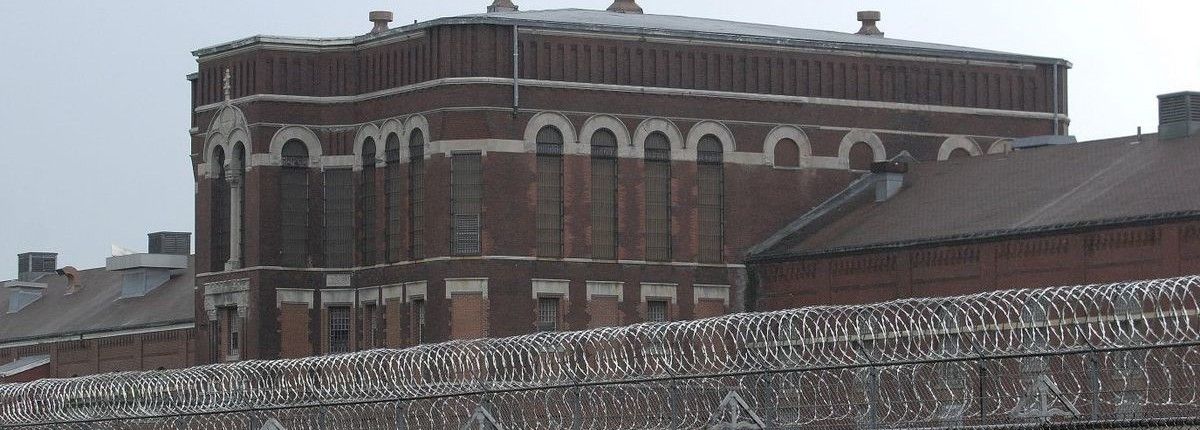We are a coalition of civil rights attorneys who represent prisoners in lawsuits against Governor Pritzker and the Illinois Department of Corrections requesting that the federal court order the state to reduce the prison population to prevent the spread of COVID-19 and save lives. We filed these cases because many people in IDOC custody, including some of our longtime clients, face a serious risk of death during the COVID-19 pandemic. This lethal virus spreads like wildfire in congregate settings like nursing homes, cruise ships, aircraft carriers, and prisons and jails. Governor Pritzker and the IDOC have responded to this threat by awarding “good time” credits, increasing the use of home detention and electronic monitoring, and temporarily releasing people on medical furloughs as well as commuting some sentences. These individuals, who have already had many years of imprisonment, will now be able to safely quarantine at home while still being subject to the strict requirements of Mandatory Supervised Release (MSR/Illinois’ name for parole supervision). As with the requirements for those on furlough or home detention, the strict requirements of MSR govern where people live and how they spend their time, and demand regular contact with IDOC officials. If a person violates MSR, they can be subject to immediate re-incarceration. Governor Pritzker has released a very small percentage of the people in IDOC custody who are particularly vulnerable to COVID-19. Those released include two of our named plaintiffs. Carl Reed is a 59-year-old man who lives with kidney disease and hypertension, and was convicted of a crime he did not commit. He has been fighting to clear his name for over 20 years. James Money is 28 years old and is recovering from thyroid cancer. He was scheduled to be released from custody in June 2020. There are thousands of other people just like Mr. Money and Mr. Reed who may die in custody if the governor does not act with increased urgency to process these additional releases.
Recently, Governor Pritzker has received some criticism for releasing people in custody. While we are not generally in the business of defending publically people we sue, we are compelled to set the record straight. Critics of Governor Prizker are using this unprecedented crisis to stoke fear and gain political leverage. These criticisms ignore undisputed facts. Decarcerating Illinois at this moment is good for public safety, public health and will conserve taxpayer dollars.
First, many of the people who Governor Pritzker has released face a substantially increased risk of death should they contract COVID-19, and all pose a substantially decreased risk of committing a criminal act. The experiences of other states prove this point. For example, in Maryland, 200 elderly “lifers” were released from prison en masse after a court found that their sentence violated the Constitution, and as of 2018 they have had a three percent recidivism rate [1]. Multiple studies prove that people over the age of 40 have the lowest recidivism rates. Put simply, the public is not at risk from the people Governor Pritzker has transferred to home supervision [2] [3] [4] ,,. Additionally, the people transferred to home supervision all have strong support in their home communities. This too, indicates that they statistically are less likely to pose any public safety risk [5] [6],. Not only do prison reductions not increase crime—there’s substantial data proving that a reduction in incarceration actually improves public safety outcomes. A landmark study found that over the past 10 years, 19 states have decreased both imprisonment and crimes. In New Jersey, there has been a 37 percent drop in incarceration rates between 2000 and 2015, with a 30 percent decrease in crime during the same time period. After California significantly reduced its prison population, there were significant declines in crimes rates for all violent categories, most notably in the murder rate (an eight percent drop) [7].
Second, COVID-19 is an unprecedented public health emergency, and if we can reduce the risk to people inside prisons, we will reduce the risk for all of us. Prisons are absolutely breeding grounds for this virus. Stateville is the number eight COVID-19 hot spot in the country as of now [8]. Prisons are not closed environments—the officers, administrators, and medical professionals leave work and return to their homes, putting their families at risk and potentially taxing community health providers. Social distancing is the most effective form of prevention, and social distancing is simply impossible in a congregate environment like a prison. Reducing the prison population helps increase the number of people who can safely practice social distancing. This helps reduce overall risk—especially for the workers behind the prison walls.
Third, releasing people from custody is good policy. Studies show that elderly people who are released after lengthy prison sentences—like most of the people who recently received commutations—almost never reoffend. But elderly, sick, and otherwise vulnerable people account for a very large portion of the money Illinois spends on medical care for its prisoners, even before COVID-19. Should they become infected with the coronavirus, they are very likely to end up in the local hospitals of these often rural communities, where ICU beds are scarce. It makes good fiscal sense to send them home, where they are less likely to need expensive medical interventions.
Finally, increasing the number of people transferred from the IDOC to home supervision is a moral imperative. No one being held in IDOC has a death sentence; Illinois was wise enough to end the death penalty in 2011. But COVID-19 has turned our prisons into death traps. Thousands of people who pose no public safety threat are at risk of almost certain death if Governor Pritzker fails to act with increased urgency. This is perhaps the most important fact conveniently ignored by the governor's critics.
Community Justice & Civil Rights Clinic, Bluhm Legal Clinic, Northwestern Pritzker School of Law
Equip for Equality
Illinois Prison Project
Loevy and Loevy
Restore Justice Illinois
Roderick and Solange MacArthur Justice Center
Uptown People’s Law Center
1. The Ungers: 5 Years and Counting: A Case Study in Safely Reducing Long Prison Terms and Saving Taxpayer Dollars, The Justice Policy Institute ( Nov. 15, 2018) http://www.justicepolicy.org/research/12320?utm_source=%2fUnger&utm_medium=web&utm_campaign=redirect
2. KidDeuk Kim & Bryce Peterson, Aging Behind Bars: Trends and Implications of Graying Prisoners in the Federal Prison System, 5-6, Urban Institute, August 2014, https://www.urban.org/sites/default/files/publication/33801/413222-Aging-Behind-Bars-Trends-and-Implications-of-Graying-Prisoners-in-the-Federal-Prison-System.PDF
3. (supra note 3) Id. at 5.
4. Mariel Aper, Matthew R. Durose and Joshua Markman, 2018 Update on Prisoner Recidivism: A 9-Year Follow-up Period (2005-2014), U.S. Department of Justice, 8 (May 2018), https://www.bjs.gov/content/pub/pdf/18upr9yfup0514.pdf
5. Fontaine, Gilchrist-Scott et. al, Families and Reentry: Unpacking How Social Support Matter, The Urban Institute, 29 (June 2012), https://www.urban.org/sites/default/files/publication/24921/1001630-Families-and-Reentry-Unpacking-How-Social-Support-Matters.PDF
6. Id. at 337 citing Barrick, K., Lattimore, P. K., & Visher, C., Reentering women: The impact of social ties on long-term recidivism. The Prison J. , 94, 279-304 (2014).
7. Id. at 3-4.
8. Coronavirus in the U.S.: Latest Map and Case Count, The New York Times, (April 2020), https://www.nytimes.com/interactive/2020/us/coronavirus-us-cases.html

